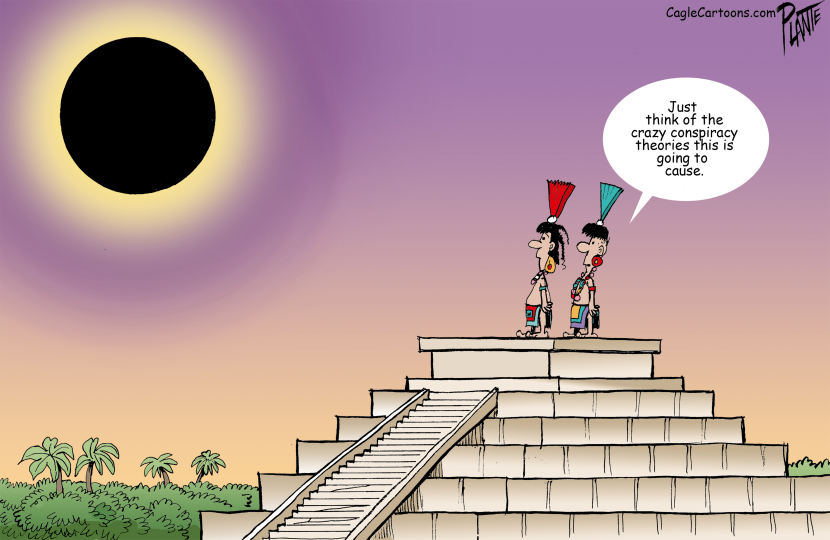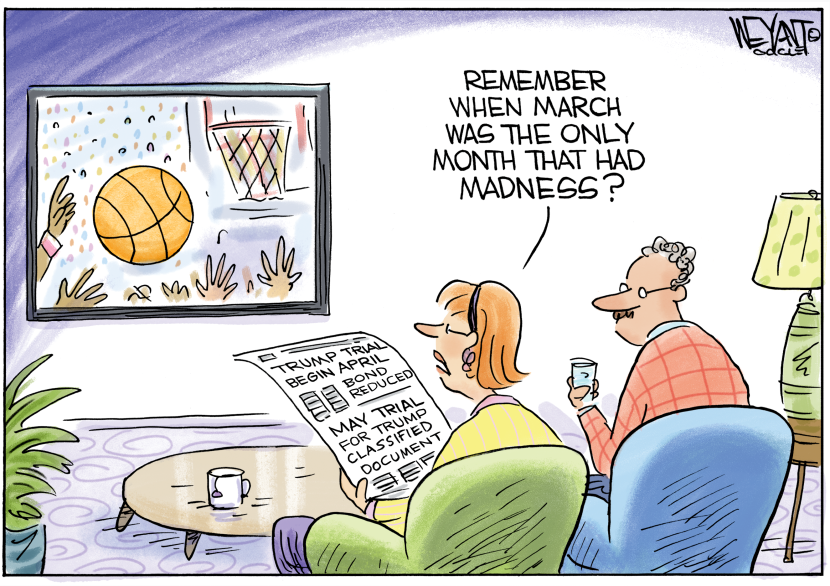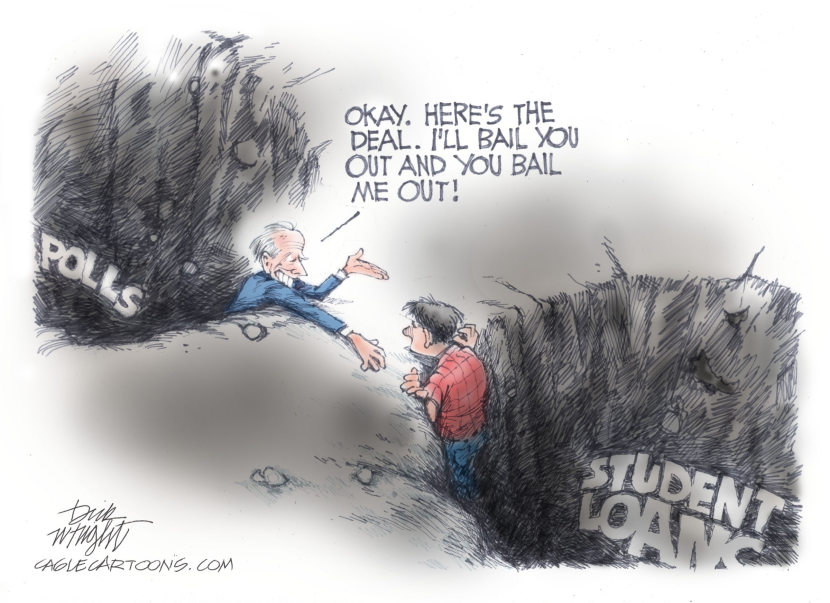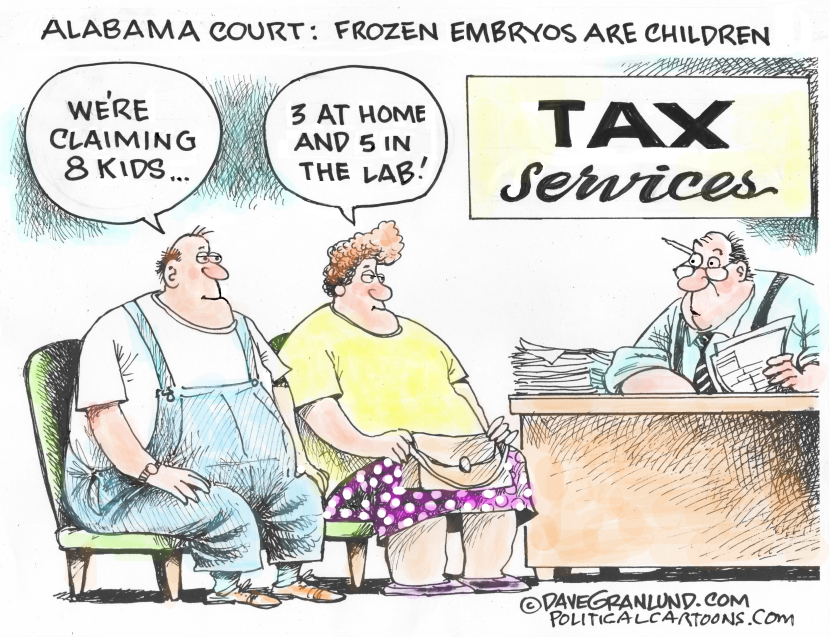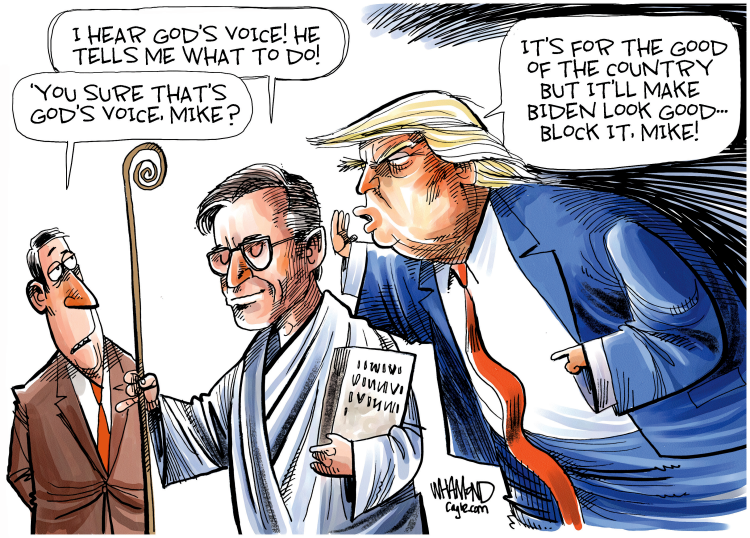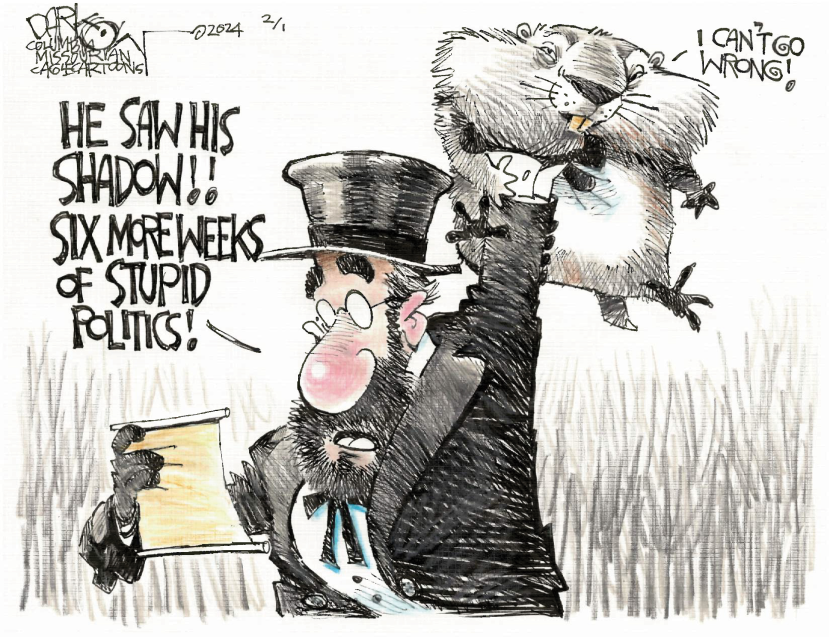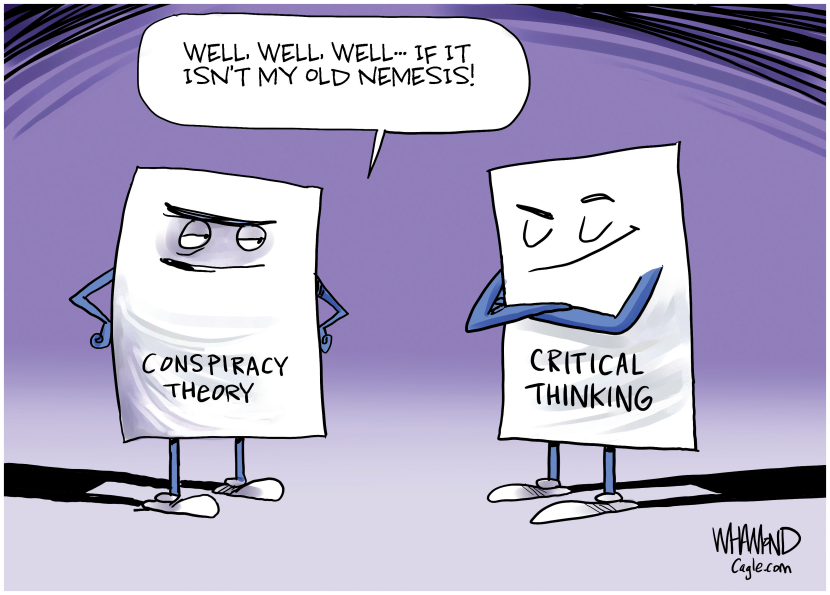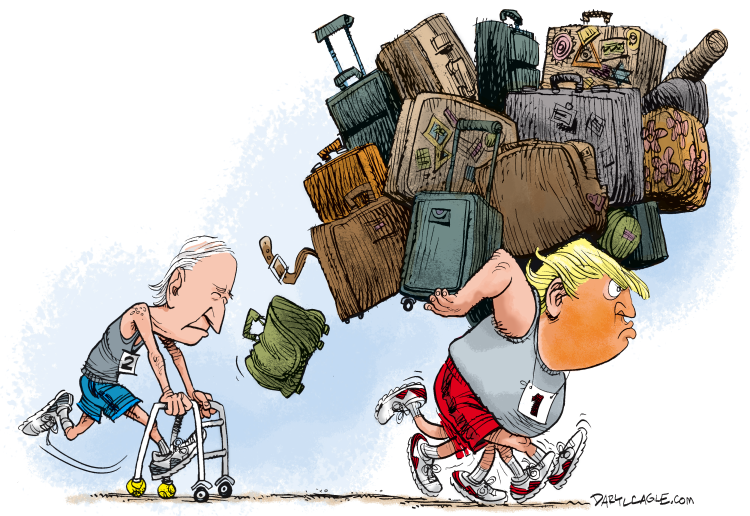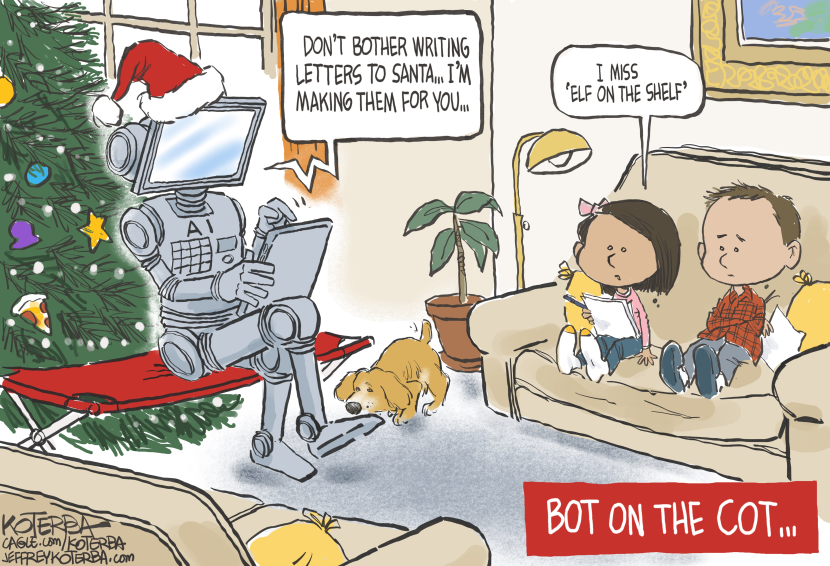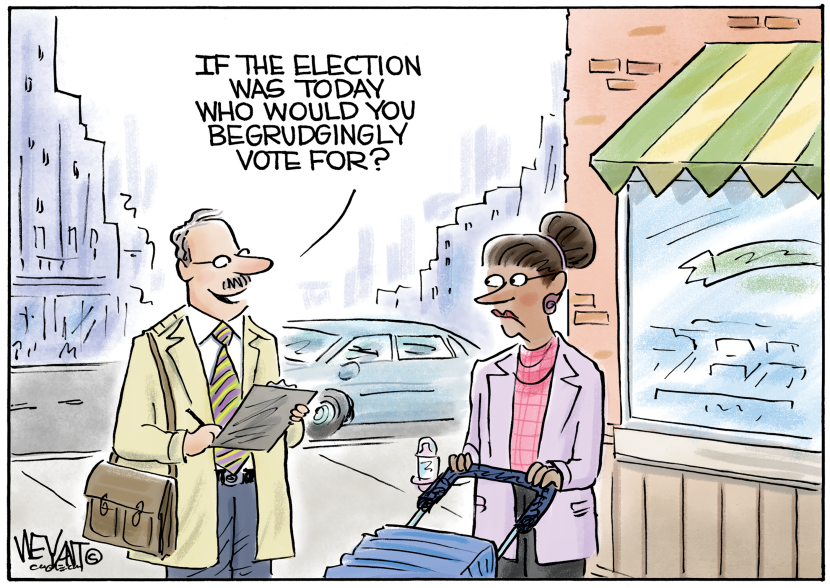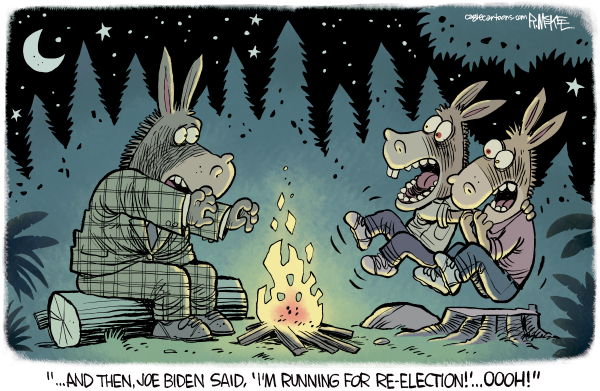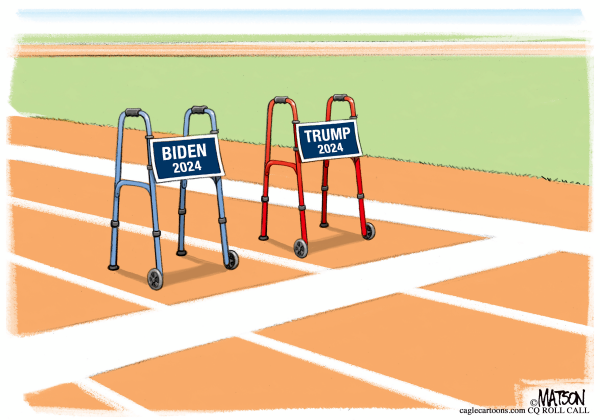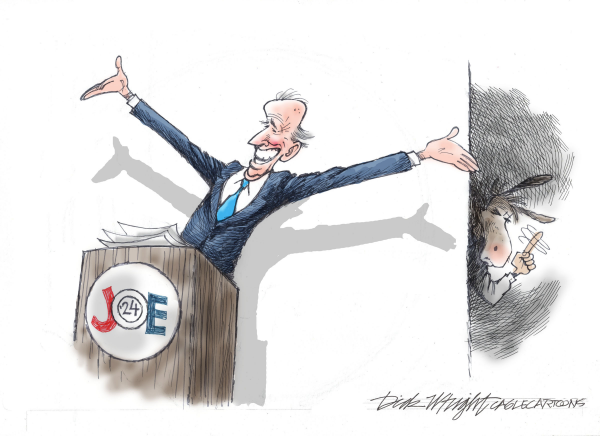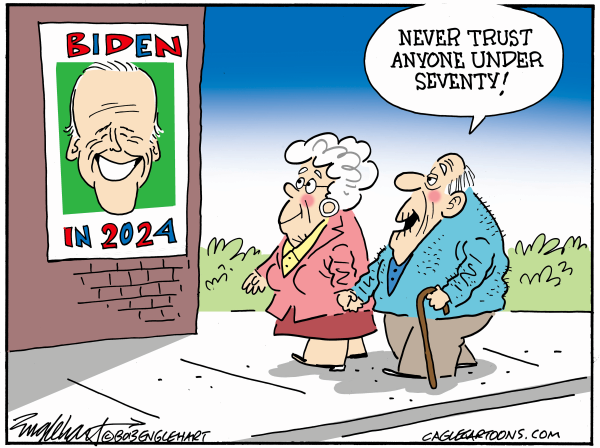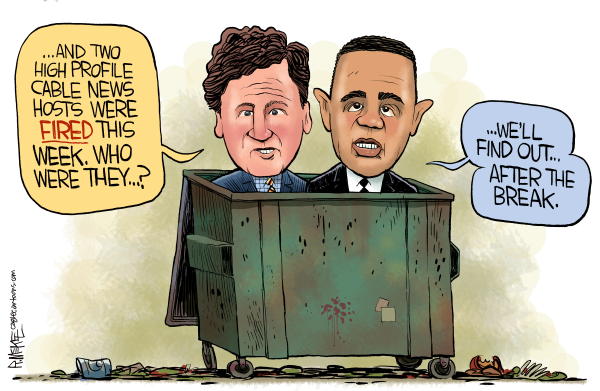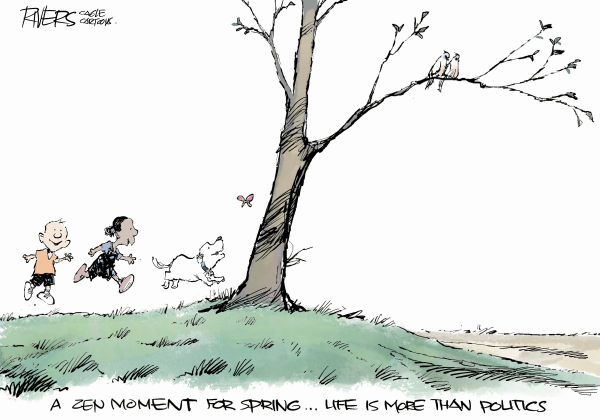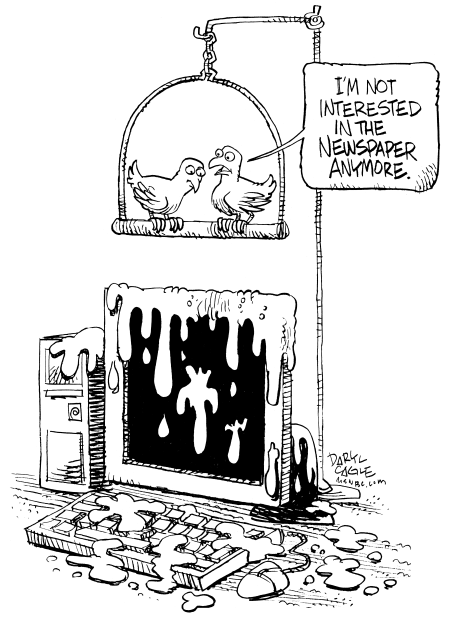
There was a “cartoon kerfuffle” this week as The New York Times announced that they would begin running traditional editorial cartoons again, in an email invitation to selected, top political cartoonists. It was good news that one of America’s biggest newspapers would again embrace our art form, but their offer was so lousy it only made the cartoonists angry.
What the Times proposed was having all the best cartoonists submit finished cartoons to them on Fridays, for publication in their Sunday edition. The Times wanted the cartoons to be exclusive to them; the cartoons could not be reprinted elsewhere. The Times would pick one of the cartoons and pay the winning cartoonist a paltry $250, sending him an exclusive contract only after he wins the selection contest; the dozens of losing cartoonists would get nothing. Of course, the cartoonists reacted to this offer with disgust, and the Internet has been buzzing with cartoon disdain for the arrogant New York Times the past few days.
The Times is arguably the most prestigious newspaper, and they have been without a staff editorial cartoonist for many decades – a sore spot for our beleaguered editorial cartooning profession which has been losing jobs at about the same rate as newsroom journalists, as newspapers’ fortunes have declined. Before dropping editorial cartoons entirely, the Times ran a weekly “round-up” of syndicated cartoons under the title, “Laugh Lines,” in which they selected funny cartoons that were like Jay Leno jokes, expressing no strong opinion, but good for a smile. Cartoonists suspected that the new cartoon in the Times would be the same, encouraging cartoonists to compete for the Times’ favor by submitting opinionless, funny cartoons that would further “dumb-down” the profession. The Times would also remove the artist’s signature from their editorial cartoons, an annoyance to the cartoonists.
Newspapers have gotten used to the idea that editorial cartoons are cheap, because of “syndication” where cartoonists distribute their cartoons to hundreds of newspapers through “syndicates” (businesses that charge very little for the cartoons). But syndication is no extra work for the cartoonist, distributing only cartoons that the cartoonist has already drawn for his own newspaper, and the syndicated cartoons are “non-exclusive,” that is, they can be purchased and reprinted anywhere, unlike the New York Times proposal for exclusive cartoons for only $250, with a contest between cartoonists who would spend time submitting and making changes for the Times’ editors, with only one cartoonist having his work printed and getting paid.
It is a sign of our times, of how far our cartooning profession has fallen, and of how callously editors have devalued our work that the Times would solicit cartoons under these conditions – and also a sign of how arrogant The New York Times has become, to assume that top cartoonists would participate. There has been some blowback, with prominent cartoonists writing letters to the Times dissing the offer and refusing to participate; one of my favorites came from award-winning Canadian cartoonist Cam Cardow who wrote:
“I suggest you take this idea back to the boardroom from which it was birthed and have it reconsidered. I would also humbly suggest that your editors take an afternoon off and head to the local library to study the contributions editorial cartooning has made to journalism and society. For one, you’ll be surprised to find out professional cartoonists don’t live in trailer parks, or panhandle at malls. Some of us even have all our teeth. Well, we Canadian do.”
I’m told that the Times is now “revisiting the policy.” I have a few suggestions for the Times:
1. Try reprinting the best syndicated cartoons again, with signatures of the artists in place, and without the title, “Laugh Lines,” so that cartoons which make a reader cry or think might get equal play in the Times as the little jokes.
2. Or, if you want an exclusive cartoon, trust one cartoonist and pay him or her fairly. Find someone whose point of view is in line with the Times’ editorial stance; commit to that cartoonist and give him the same freedom that you do with your columnists. After all, editorial cartoonists are graphic columnists, except that our work is more powerful than the words of columnists. Nobody tears out a column and sticks it to their refrigerator.
Daryl Cagle is a political cartoonist and blogger for MSNBC.com; he is a past president of the National Cartoonists Society. Daryl’s cartoons are syndicated to more than 850 newspapers, including the paper you are reading now. Comments to Daryl may be sent to [email protected]. Read Daryl’s blog at www.cagle.com/author/cagle.

